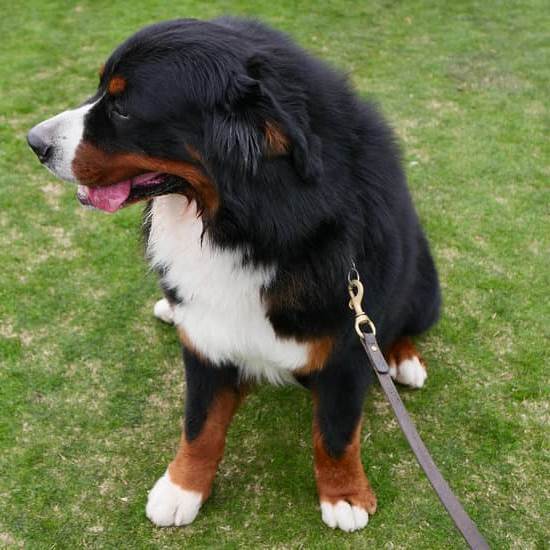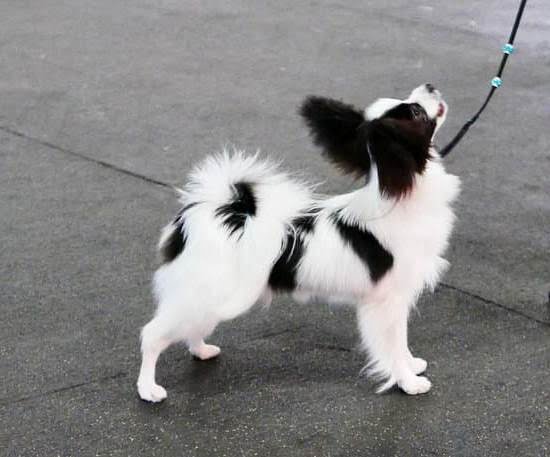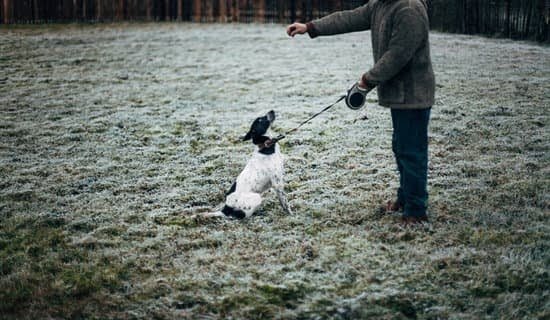Do you find yourself wondering how to train your dog not to whine? Understanding the reasons behind whining in dogs is the first step in addressing this behavior. Dogs may whine for a variety of reasons, including anxiety, attention-seeking, or even as a response to certain stimuli. In this article, we will explore effective training techniques and strategies to help your furry friend overcome excessive whining.
Setting clear and consistent boundaries for your dog is crucial in preventing and managing whining behavior. Through positive reinforcement training techniques, you can encourage desirable behaviors while discouraging whining. Addressing separation anxiety and attention-seeking behavior with desensitization and counterconditioning methods can also make a significant impact on reducing whining in dogs.
Establishing a structured routine for your dog can provide a sense of security and predictability, which may help alleviate anxious or attention-seeking behaviors. Additionally, seeking professional help and training resources, along with maintaining patience and persistence, are essential components in successfully training your dog not to whine. By employing these strategies, you can improve your dog’s behavior and strengthen the bond between you and your furry companion.
Setting Clear and Consistent Boundaries for Your Dog
When it comes to training your dog not to whine, it’s crucial to establish clear and consistent boundaries. Without proper boundaries, your dog may become confused about what behaviors are acceptable and may resort to whining as a way to communicate their needs or seek attention. Here are some tips on setting clear and consistent boundaries for your furry friend:
1. Establish Rules: Create a list of rules that you want your dog to follow, such as not whining for attention or not whining during meal times. Clearly communicate these rules to everyone in the household so that there is consistency in enforcing them.
2. Use Positive Reinforcement: When your dog follows the established rules and does not whine, be sure to reward them with praise, treats, or playtime. This positive reinforcement will help them understand what behaviors are desirable and encourage them to continue behaving in that manner.
3. Avoid Mixed Signals: It’s important to avoid sending mixed signals to your dog when it comes to whining. For example, if you sometimes give in to their whining by providing attention or treats, they may learn that whining is an effective way to get what they want.
By setting clear and consistent boundaries for your dog and using positive reinforcement techniques, you can effectively train them not to whine in various situations.
Remember that training takes time and patience, so be persistent and stay committed to the process of teaching your dog how to behave appropriately without resorting to whining. With consistent effort and proper guidance, you can help your furry companion overcome this behavior issue.
Positive Reinforcement Training Techniques
What Is Positive Reinforcement?
Positive reinforcement is a training method that involves rewarding your dog for exhibiting the desired behavior. This can be done using treats, praise, toys, or any other reward that your dog finds enjoyable. The key to positive reinforcement training is to reward your dog immediately after they display the behavior you want to reinforce. By doing so, you are effectively teaching your dog that good things happen when they exhibit the desired behavior.
How to Implement Positive Reinforcement in Training
When using positive reinforcement to train your dog not to whine, it’s important to catch them in the act of being quiet and calm. As soon as you notice this behavior, immediately praise and reward them with a treat or verbal praise. Consistency is key in positive reinforcement training, so be sure to reward your dog every time they exhibit the desired behavior.
Avoid Punishment
It’s crucial to avoid punishing your dog for whining, as this can lead to increased anxiety and stress. Instead, focus on ignoring the whining and only providing attention or rewards when your dog is quiet. Punishing your dog for whining can have negative effects on their behavior and may exacerbate the issue. Remember, positive reinforcement is about rewarding the behaviors you want to see, rather than focusing on the unwanted behaviors.
By utilizing positive reinforcement training techniques, you can effectively teach your dog not to whine while strengthening the bond between you and your furry friend. Remember that consistency, patience, and persistence are essential in this training process. With dedication and positivity, you can help guide your dog towards exhibiting desirable behaviors.
Addressing Separation Anxiety and Attention-Seeking Behavior
Dogs may often wine due to separation anxiety or attention-seeking behavior. Understanding the reasons behind your dog’s whining is crucial in addressing and resolving this behavior. Here are some tips on how to train your dog not to whine when experiencing separation anxiety or seeking attention:
1. Provide enough physical and mental stimulation: Dogs may resort to whining when they feel bored or anxious due to lack of physical exercise or mental stimulation. Make sure your dog gets enough exercise, playtime, and mental enrichment through interactive toys, puzzle feeders, or training sessions.
2. Gradually increase alone time: If your dog exhibits separation anxiety, gradually increasing the time spent apart can help them adjust to being alone. Start with short periods of separation and gradually extend the duration as your dog becomes more comfortable with being alone.
3. Ignore attention-seeking whining: When your dog whines for attention, it’s important not to reinforce this behavior by giving in to their demands. Ignoring the whining and only rewarding quiet, calm behavior will teach your dog that whining doesn’t result in getting what they want.
Remember that training takes time and consistency, so be patient and persistent in implementing these techniques. Seeking professional help from a certified dog trainer or behaviorist can also provide valuable guidance in addressing separation anxiety and attention-seeking behavior in dogs.
Using Desensitization and Counterconditioning Methods
Desensitization and counterconditioning are two effective methods for training your dog not to whine. Desensitization involves exposing your dog to the trigger of their whining in a controlled and gradual manner, while counterconditioning focuses on changing your dog’s emotional response to that trigger. These techniques are especially useful for dogs who whine due to fear or anxiety.
To begin desensitization, identify the specific triggers that cause your dog to whine. This could be separation from you, encountering other animals, or loud noises. Once you have identified the triggers, gradually expose your dog to them at a low intensity and in a safe environment. For example, if your dog whines when left alone, start by leaving them alone for short periods of time and gradually increase the duration as they become more comfortable.
Counterconditioning involves changing your dog’s emotional response to the triggers that cause them to whine. You can achieve this by pairing the trigger with something positive, such as treats or toys. For instance, if your dog whines when meeting new people, have those people give them treats or play with them. Over time, your dog will start to associate the trigger with positive experiences, reducing their tendency to whine.
It’s important to be patient and consistent when using desensitization and counterconditioning methods. Progress may be slow at first, but with time and practice, you can help your dog overcome their whining behavior through these effective training techniques.
Establishing a Structured Routine for Your Dog
Consistency in Daily Activities
One of the key components in training your dog not to whine is establishing a structured routine. Dogs thrive on structure and predictability, so having consistency in their daily activities can help alleviate anxiety and reduce whining behavior. This includes feeding, exercise, playtime, and rest periods. By following a consistent schedule, your dog will know what to expect throughout the day, reducing uncertainty and potential triggers for whining.
Regular Exercise and Mental Stimulation
Regular exercise is crucial in maintaining a well-behaved and contented dog. Ensure that your dog receives an adequate amount of physical activity through daily walks, play sessions, or interactive toys. Additionally, mental stimulation is equally important in preventing boredom and anxious behaviors. Engage your dog in mentally stimulating activities such as puzzle toys or training exercises to keep their mind occupied and focused on positive behaviors.
Scheduled Training Sessions
Incorporating regular training sessions into your dog’s daily routine can be an effective way to address whining behavior. Use positive reinforcement techniques during these sessions to reinforce desired behaviors and discourage whining. Training should focus on teaching your dog alternative behaviors to replace whining, such as sitting quietly or seeking attention in a calm manner. Consistent training will help your dog learn self-control and appropriate ways to communicate their needs without resorting to whining.
By implementing a structured routine that includes consistent daily activities, regular exercise and mental stimulation, as well as scheduled training sessions, you can effectively train your dog not to wine. This approach provides a balanced environment for your furry companion while addressing the underlying reasons for their whining behavior.
Seeking Professional Help and Training Resources
When it comes to training your dog not to whine, there may be instances where seeking professional help and utilizing training resources can make a significant difference. Professional dog trainers have the knowledge and experience to address specific behavioral issues such as whining in dogs. They can assess your dog’s behavior, identify the root cause of the whining, and create a personalized training plan to address the issue.
Additionally, enrolling in obedience classes or workshops can provide you with valuable tools and techniques for training your dog. These classes not only offer structured guidance on obedience training but also provide an opportunity for socialization, which can help reduce anxiety and attention-seeking behavior in dogs. Look for reputable trainers or facilities that prioritize positive reinforcement methods and have a good understanding of canine behavior.
Furthermore, there is no shortage of training resources available to help you effectively train your dog. From books and online tutorials to mobile apps and educational videos, you can access a wealth of information on dog training techniques.
However, it’s important to vet the credibility of these resources and ensure that they align with positive reinforcement methods. Consulting with your veterinarian or local animal behaviorist can also point you in the direction of reputable resources for addressing your dog’s whining behavior.
Ultimately, seeking professional help and utilizing training resources can provide invaluable support in your efforts to train your dog not to whine. Whether it’s working with a certified trainer or tapping into educational materials, having access to expertise and guidance can contribute significantly to the success of your training endeavors.
Maintaining Patience and Persistence in the Training Process
In conclusion, training a dog not to whine requires patience and persistence from the owner. Understanding the reasons behind your dog’s whining behavior is crucial in addressing the issue effectively. Whether it is due to separation anxiety, attention-seeking behavior, or other underlying causes, setting clear and consistent boundaries for your dog is essential in modifying their behavior.
Positive reinforcement training techniques can be highly effective in teaching your dog alternative behaviors and rewarding them for good behavior. Additionally, desensitization and counterconditioning methods can help your dog overcome their triggers for whining. Establishing a structured routine for your dog can also provide them with a sense of security and predictability, reducing their need to whine for attention.
If despite your best efforts, your dog’s whining persists, seeking professional help and training resources can provide valuable guidance and support. It’s important to maintain patience and persistence throughout the training process, as changing a dog’s behavior takes time and consistency. By following these steps and staying committed to the training process, you can effectively train your dog not to whine and strengthen the bond between you and your furry companion.
Frequently Asked Questions
Can You Train a Dog Not to Whine?
Yes, you can train a dog not to whine through positive reinforcement and consistent training. Teaching the “quiet” command and rewarding calm behavior can help address excessive whining.
What Does It Mean When Your Dog Whines a Lot?
When a dog whines a lot, it could indicate various things such as anxiety, discomfort, or seeking attention. It’s essential to observe the context and body language to understand the underlying reason for the whining.
Will My Dog Stop Whining if I Ignore Him?
Ignoring a dog’s whining may or may not stop the behavior. While some dogs may eventually learn that whining doesn’t lead to attention, others might escalate their whining to get noticed. It’s important to address the root cause of the whining and provide appropriate training and reassurance.

Welcome to the blog! I am a professional dog trainer and have been working with dogs for many years. In this blog, I will be discussing various topics related to dog training, including tips, tricks, and advice. I hope you find this information helpful and informative. Thanks for reading!





